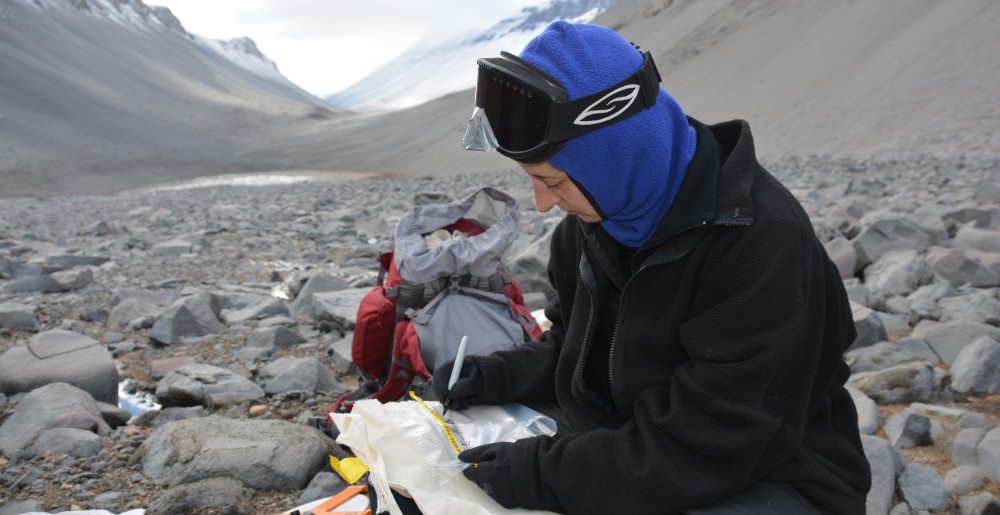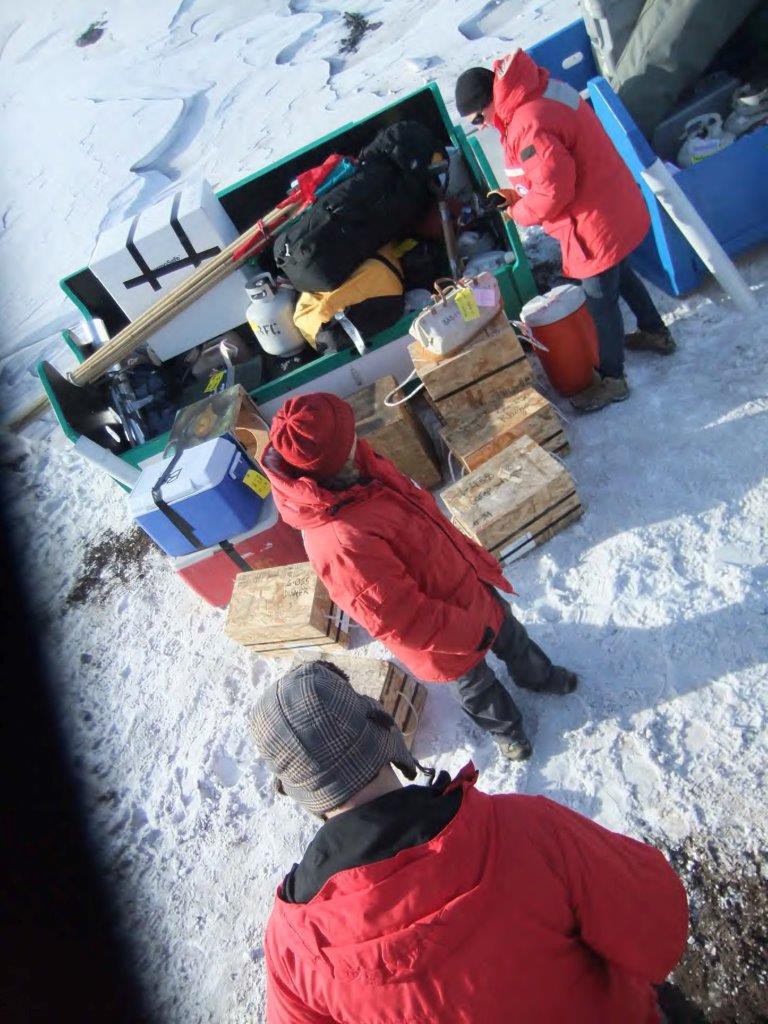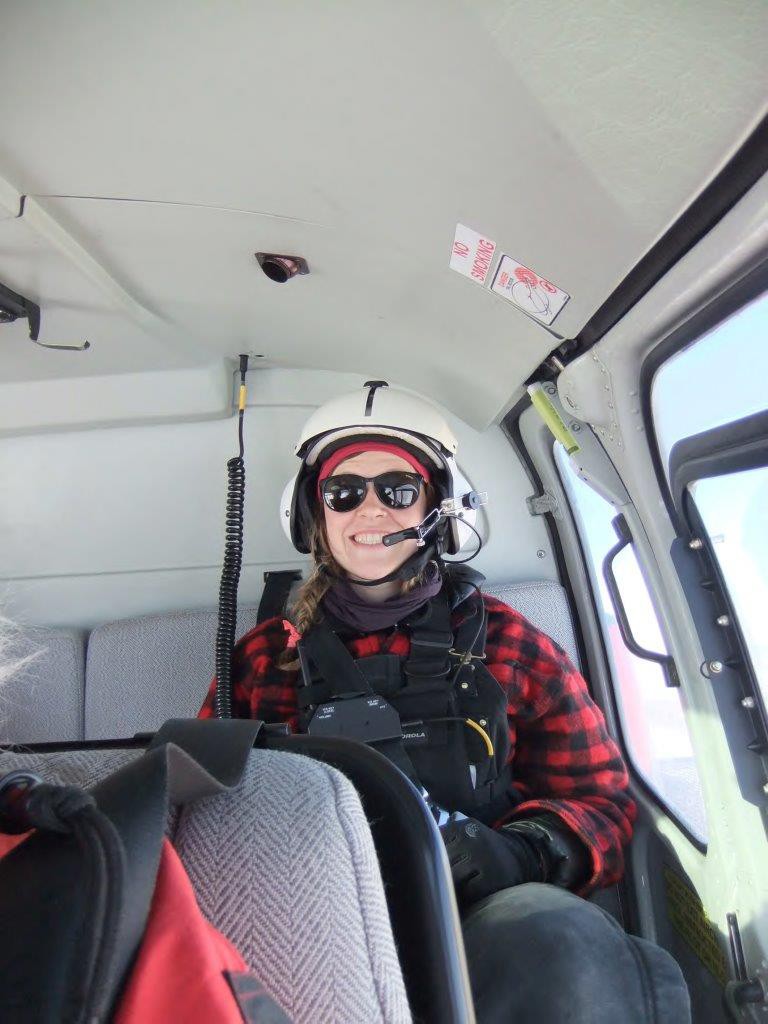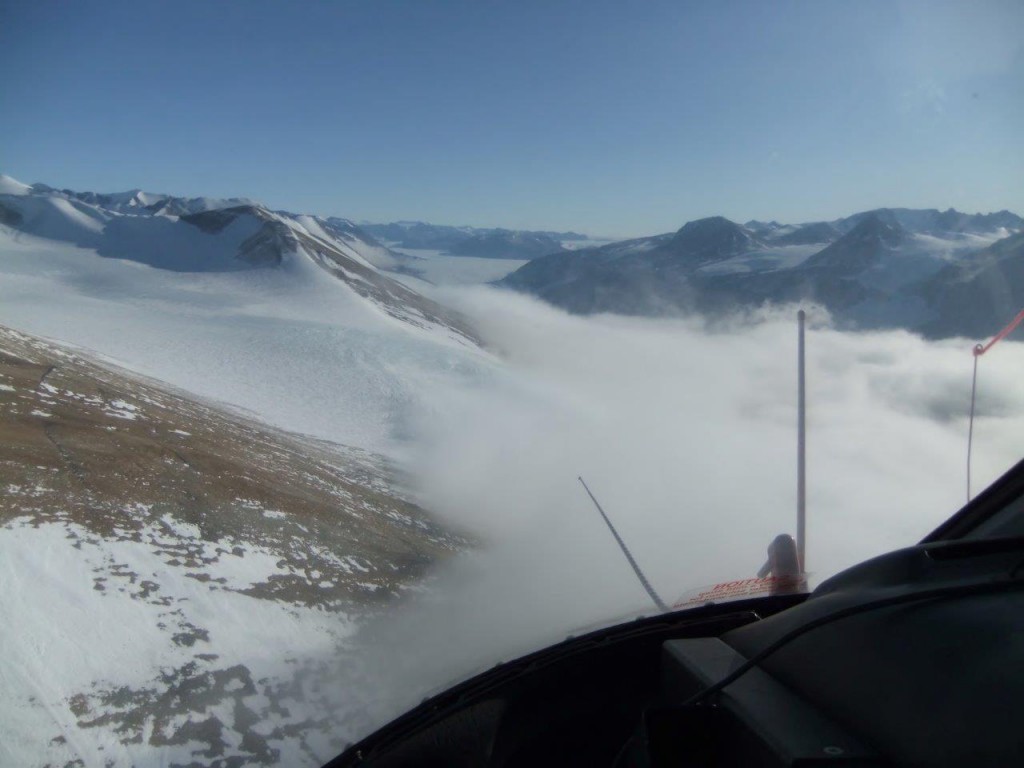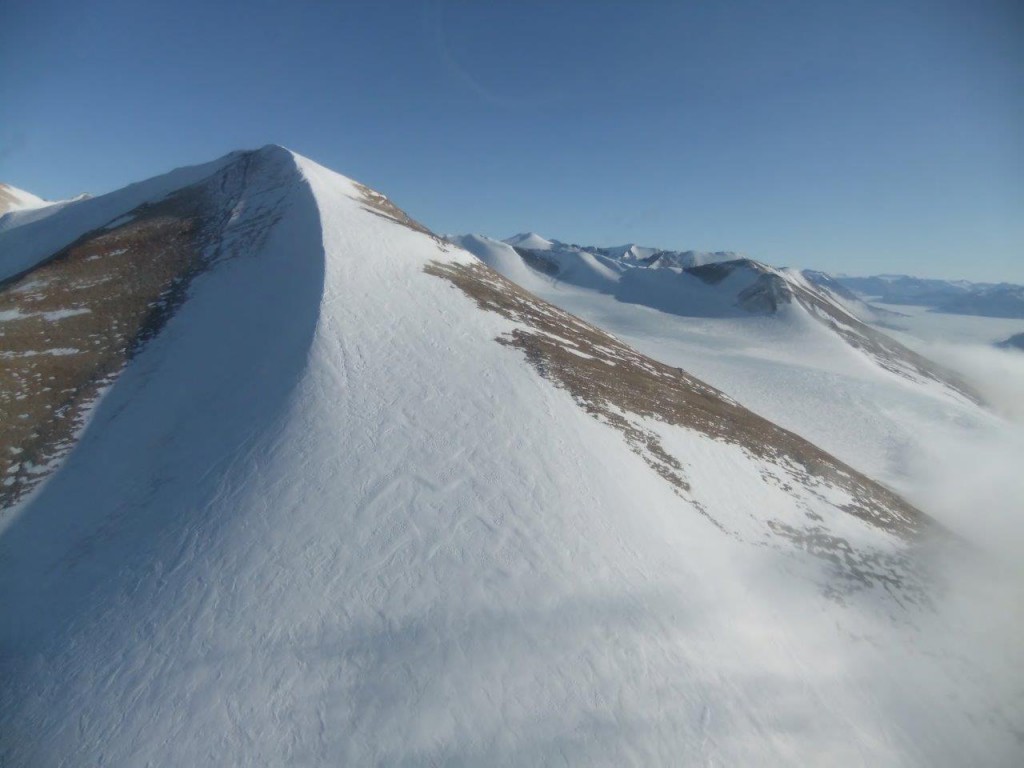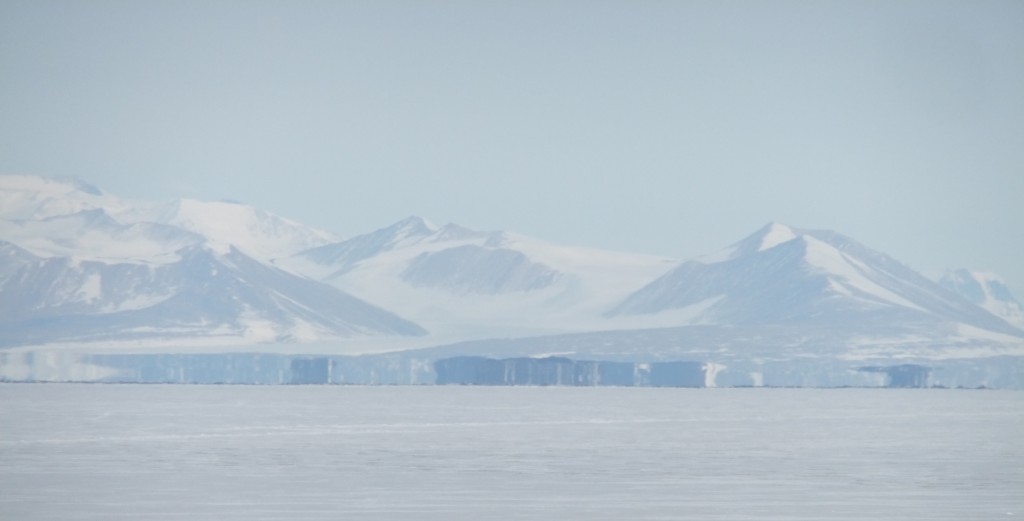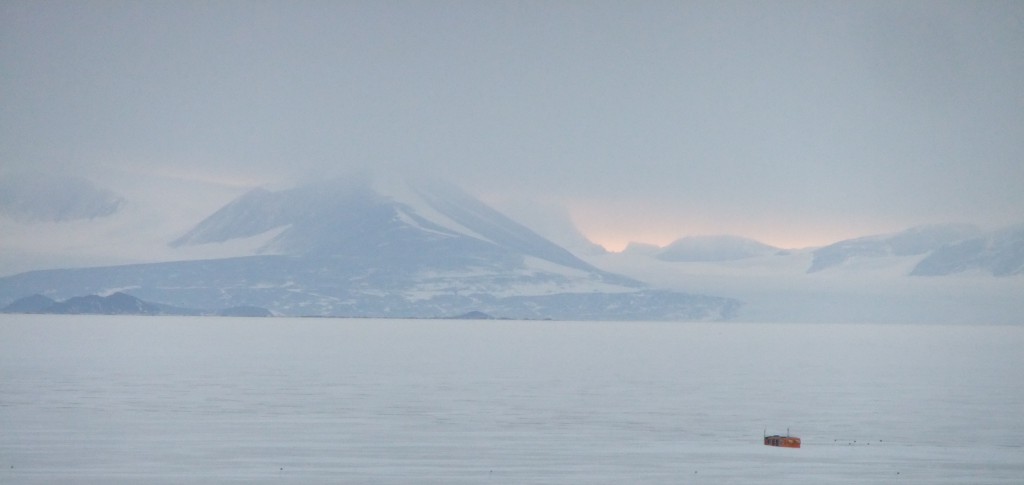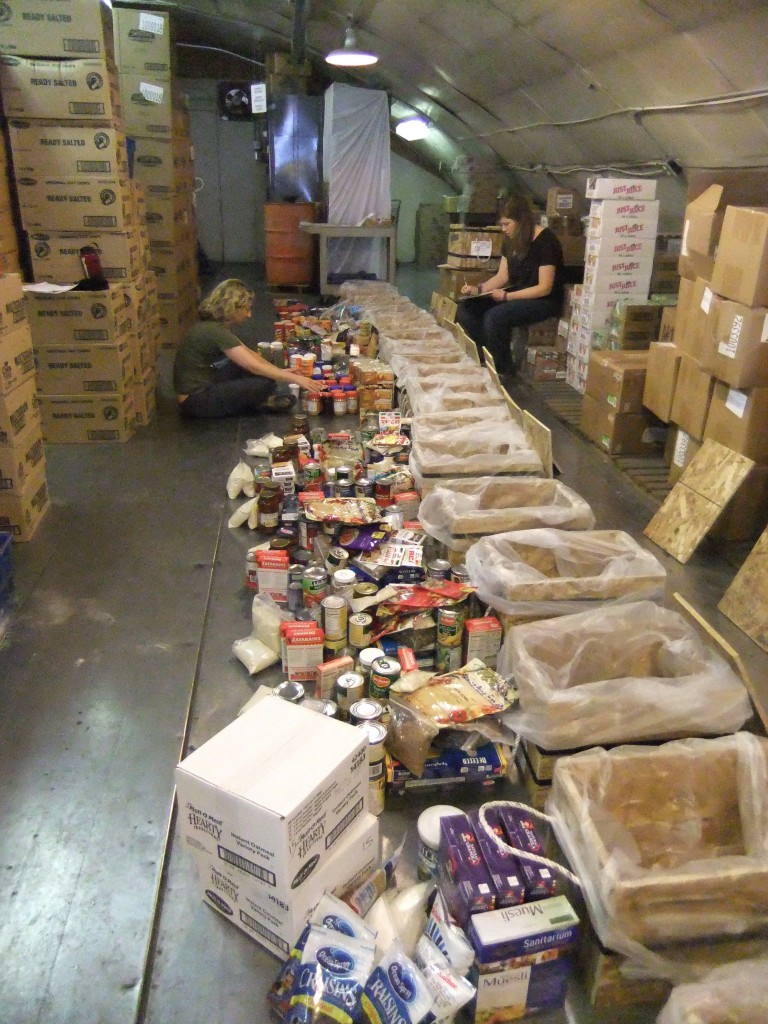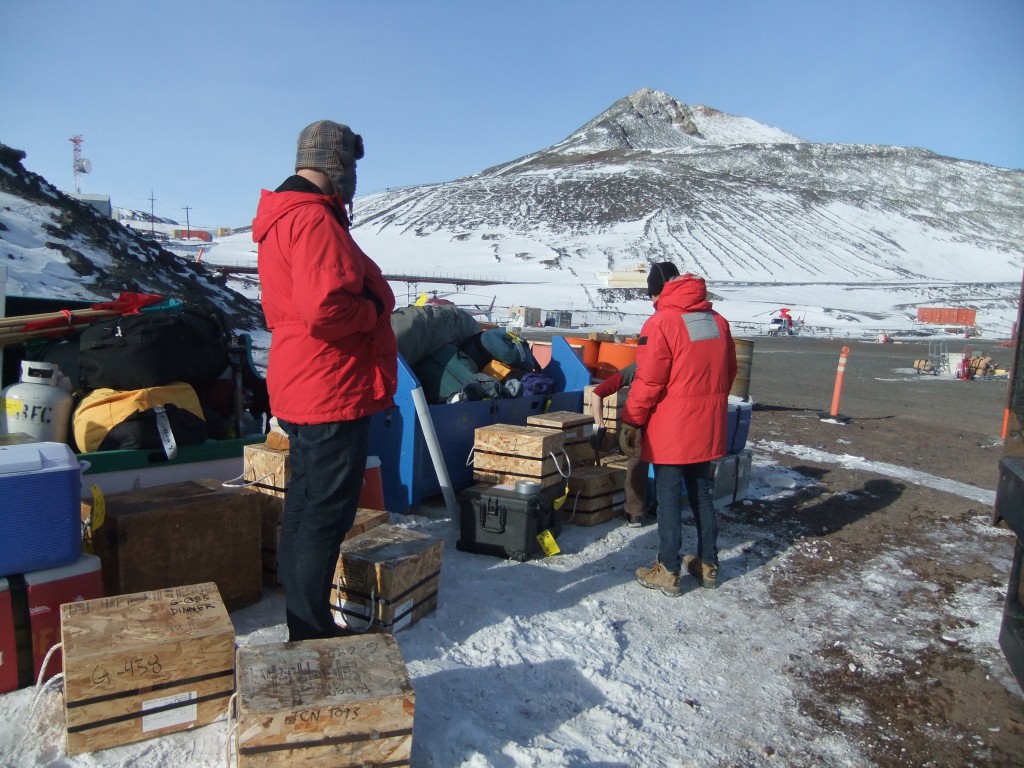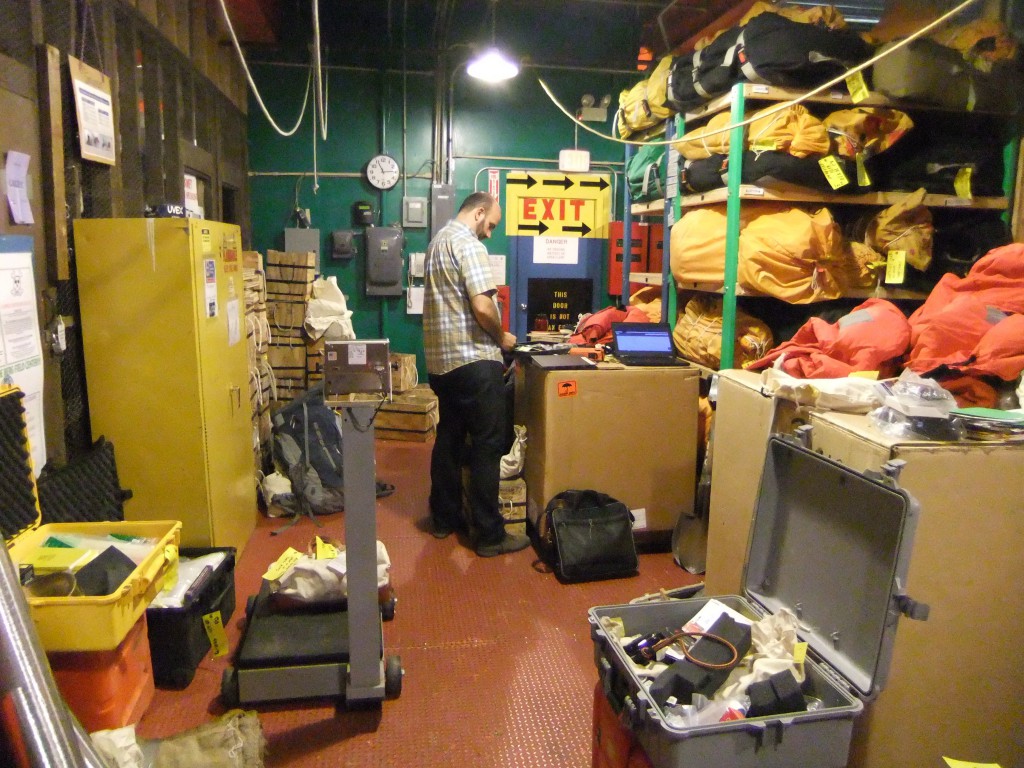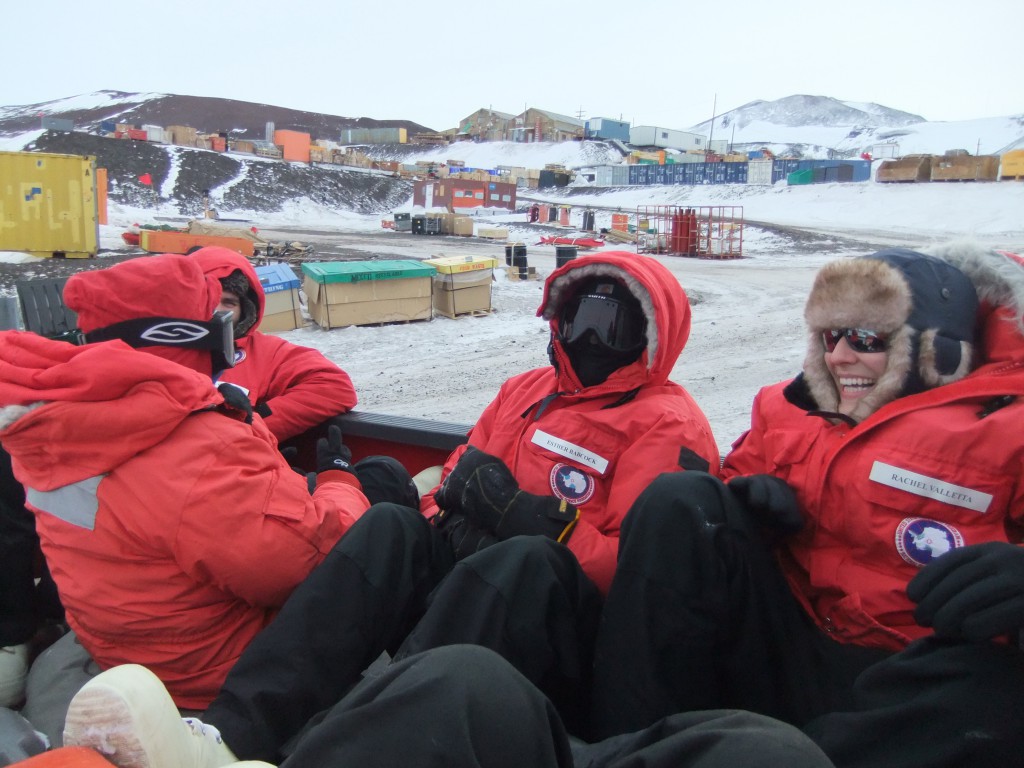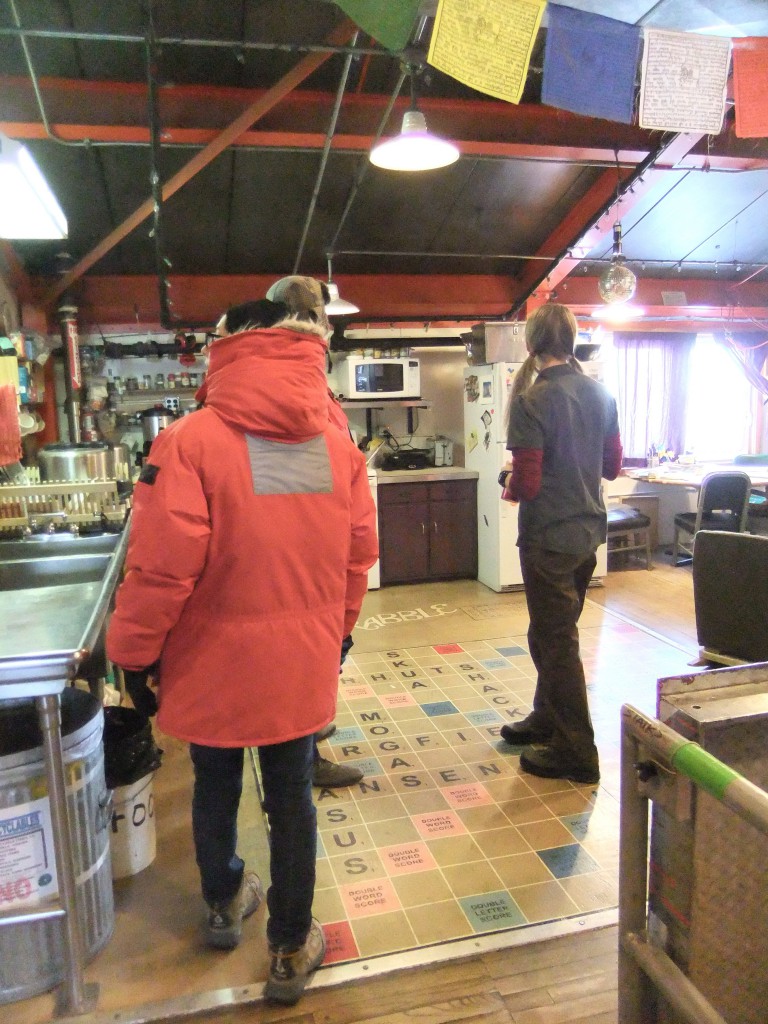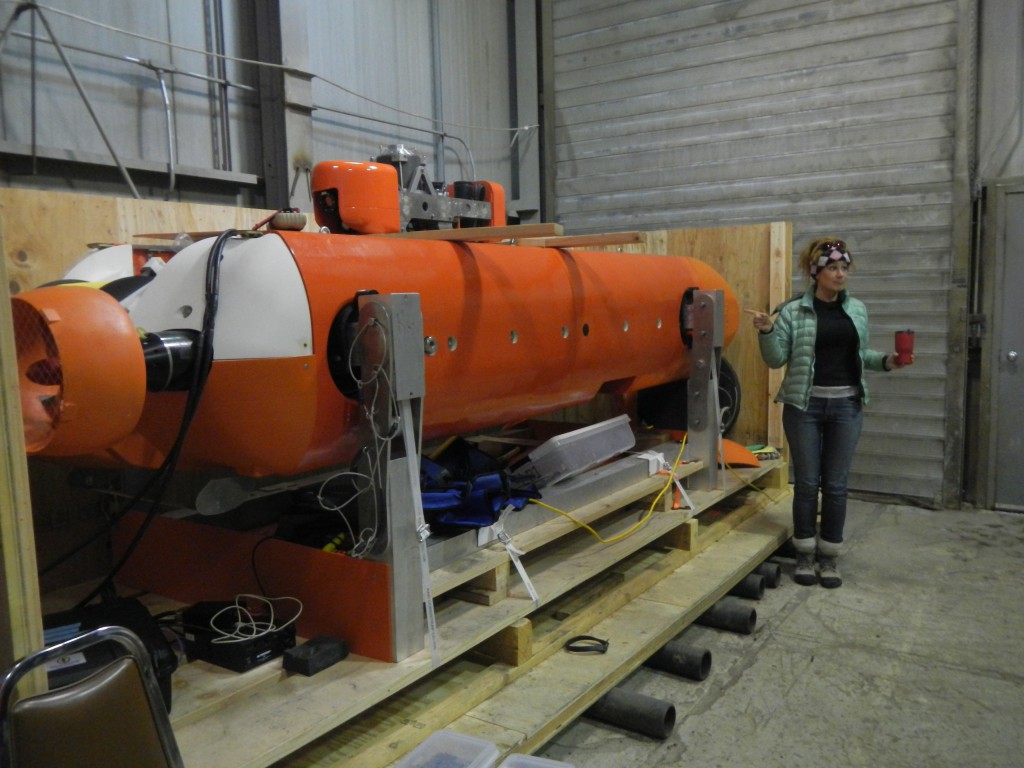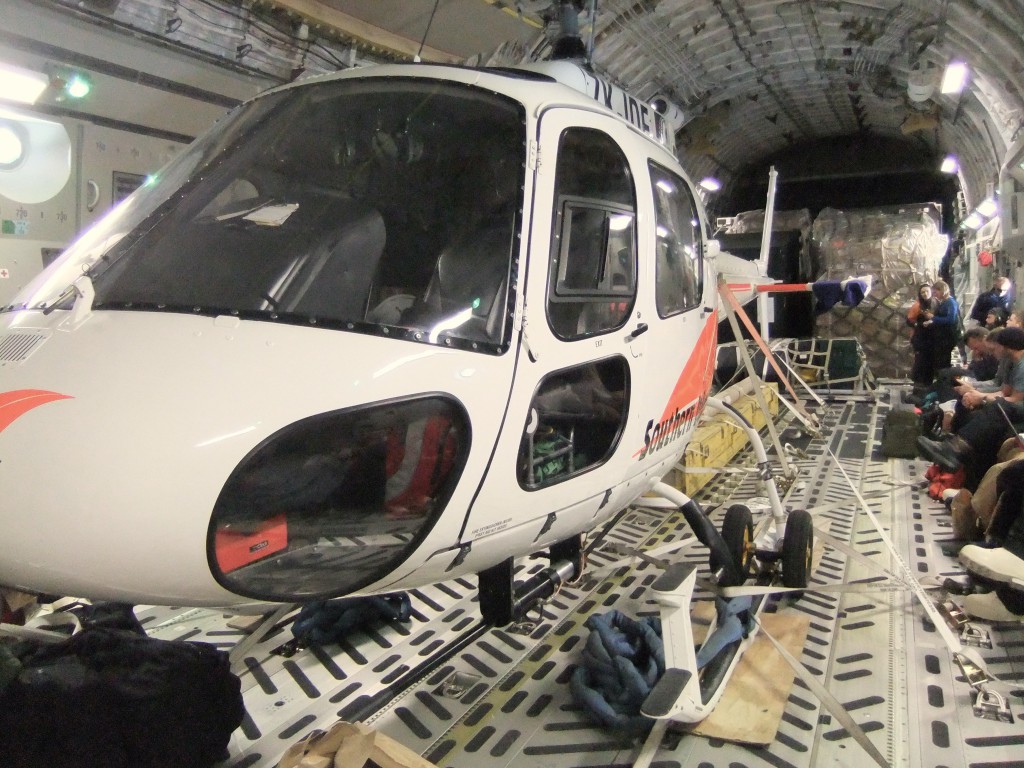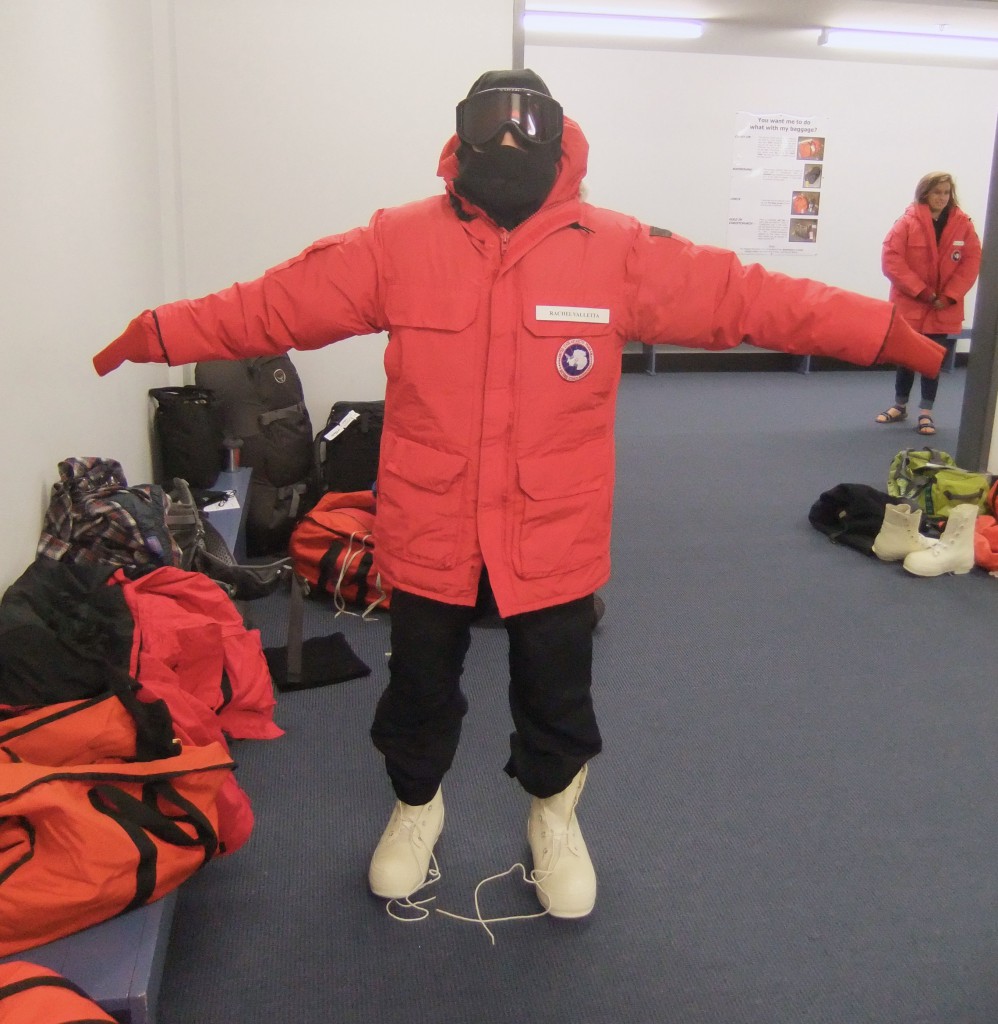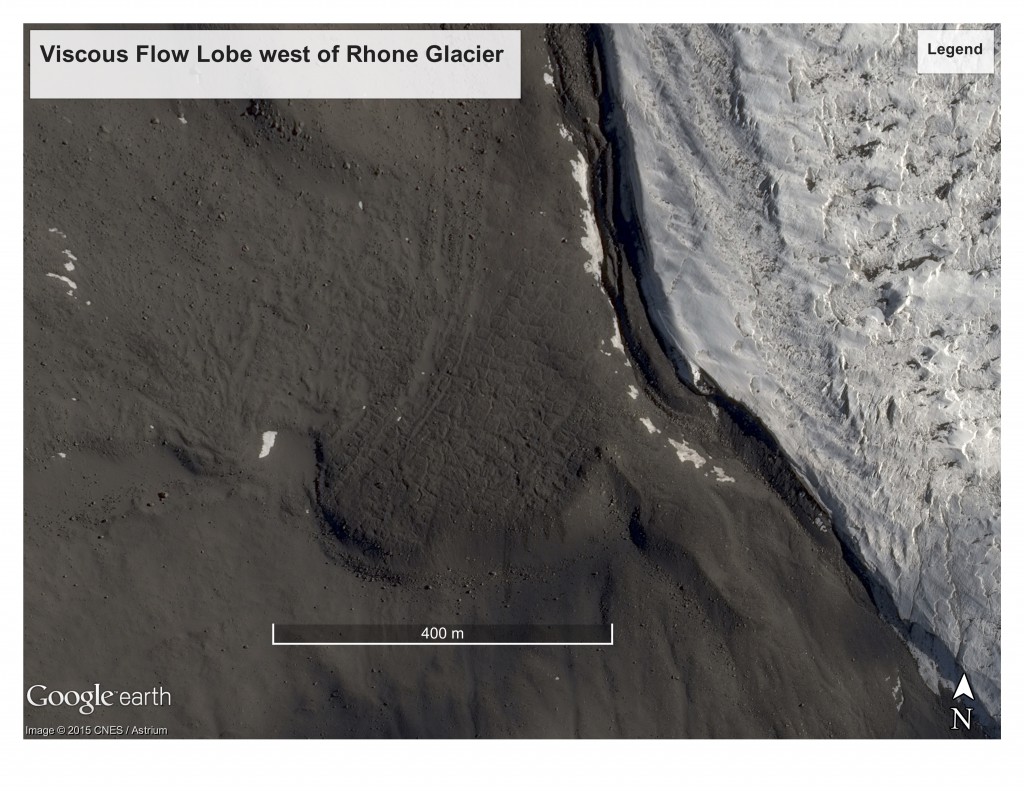Helicopters! They are so cool! They are fast, and little, and they fly close enough to the ground to see geology close-up.
The winds at McMurdo Station were unnervingly gusty this morning, so we waited to depart, then waited again, and then went down to the helo pad and waited there. They put us in the helicopter, but an approaching helo pilot could barely land for the thick cloud cover, so they pulled us back out of the helicopter. Finally, back in we went, and this time had a successful departure.
Because of the weather, the helo operators didn’t want to wait for our helo to return to reload it and send our cargo (read, tents, stoves, and sleeping bags). We didn’t really want to spend a full night in Antarctica without any shelter or heat either. So, they sent a cargo helo to follow our passenger helo to the campsite at Rhone Glacier.
Our pilot was Ryan, a friendly geologist-turned-pilot, with probably a job or several in between. He flew Jay, Mari, and I up over Ross Island, across the Ross Ice Shelf, and into the McMurdo Dry Valleys. A few lone seals lounged on the ice shelf, with some mothers and babies closer to land. I’m 80% sure that I saw a baby seal suckling. Oh yes.
At the landward edge of the Ross Ice Shelf, glaciers push out into the sea. You can see the sutures where the thick glacier ice intersects with the thinner, floating ice shelf. And inland of that…the Dry Valleys.
We passed over Ferrar Glacier and into the Kukri Hills. The high, steep Kukri slopes are patterned with an almost feathered icy snow. North of the Kukris, the brown bare ground of Taylor Valley stretches east to west. The northern cliffs are riddled with ventifacts—curvy pocked rock scoured by the wind. Frozen Lake Bonney sprawls out from the toe of Taylor Glacier, which happens to be the location of Blood Falls and just down the hill from our campsite!
